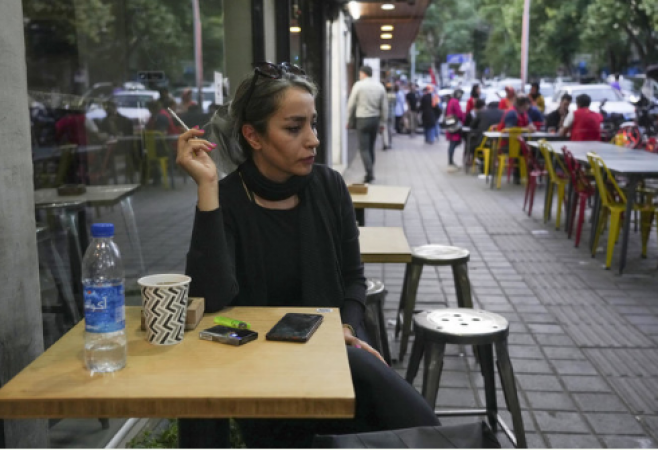
Tehran: Iranian capital's billboards urge women to wear the required headscarves out of respect for their mothers. However, more women—young and old—choose not to, perhaps for the first time since the chaotic days following Iran's 1979 Islamic Revolution.
Such overt defiance follows months of protests in response to the death in custody in September of Mahsa Amini, 22, for wearing her hijab too loosely.
The decision by some women to wear their hair uncovered in public poses a new challenge to the country's theocracy even though the protests seem to have subsided. The women's resistance also exposes rifts in Iran that had been hidden for many years.
Also Read: After a display of power, China's aircraft carrier Shandong returns to its home port.
Authorities have threatened legal action and shut down some businesses that cater to women who do not wear the hijab. Verbal warnings are given by police and volunteers in airports, subways, and other public areas.
Drivers who had women in their vehicles without head covering have received texts as a target.
Iranian analysts caution that if the government pushes too hard, it may rekindle dissent. The Islamic Republic is currently dealing with economic problems brought on by its standoff with the West over its quickly developing nuclear programme, so the protests came to light at a bad time for the country.
Some women declared that they had had enough, regardless of the consequences. They contend that they are fighting to ensure their daughters' futures and greater freedom in Iran.
Some claimed that the increasing number of women joining their ranks might make it more difficult for the government to resist.
Shervin, a 23-year-old student whose short, choppy hair waved in the wind on a recent Tehran day, asked, "Do they want to shut down all businesses?" "Will they also close the police station if I go there?"
Also Read: Bahrain's economy needs to diversify, according to the industry minister
Even so, they are concerned about risk. The women who were interviewed only gave their first names out of concern for the consequences. The decision by Vida, 29, and two of her friends to stop wearing headscarves in public is about more than just headscarves, she claimed. This is a warning to the government, she said, "Leave us alone."
The only places where wearing the hijab is still required for women are Iran and Afghanistan, which is next door and still under Taliban control. Women wore headscarves almost exclusively before the September protests began, though some occasionally let their hijabs fall to their shoulders. In some parts of Tehran today, it is common to see women without headscarves.
The head covering is a symbol of modesty before men outside of their families and piety before God for devout Muslim women. The hijab and some people's all-encompassing black chador have long served as political symbols in Iran.
The hijab was outlawed in 1936 by Iranian ruler Reza Shah Pahlavi as part of his efforts to emulate the West. Five years later, when Shah Mohammad Reza Pahlavi took over, the ban was lifted. However, many Iranian women from the middle and upper classes opted not to wear the hijab.
Also Read: Death toll in Sudan rises as warring parties continue negotiations
Some of the women who assisted in the overthrow of the shah in 1979 adopted the chador, a cloak that covers the body from head to toe except for the face. Later that year, during the US Embassy takeover and hostage crisis, images of armed women encased in black cloth started to become more and more common among Americans. However, other women objected to the Grand Ayatollah Ruhollah Khomeini's directive that the hijab be worn in public. It was made into law in 1983, and those who break it face fines and two months in jail.
Forty years later, it's common to see women in Tehran's northern and central districts without headscarves. Although initially avoiding a direct confrontation, the Iranian government has recently flexed its state's muscles in an effort to stop the practise.